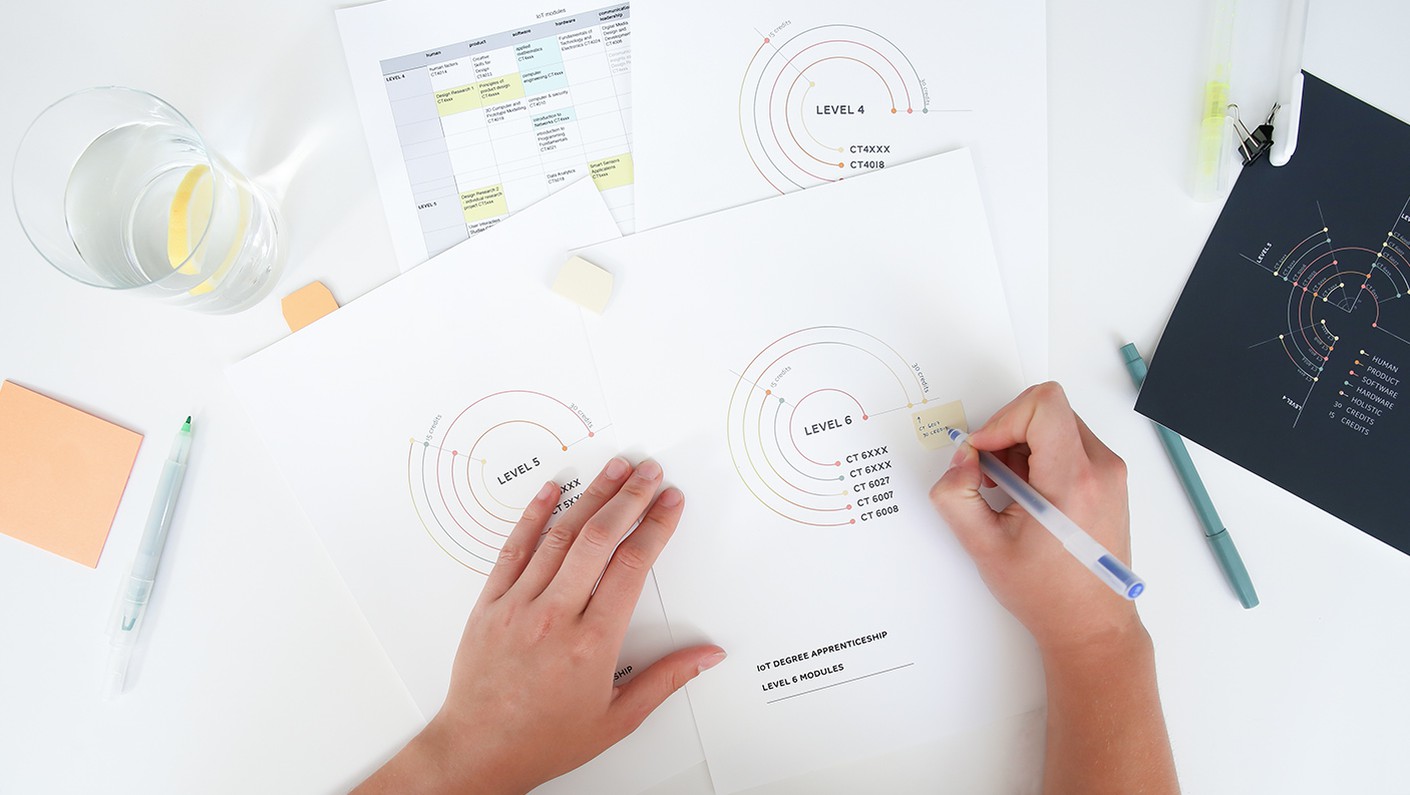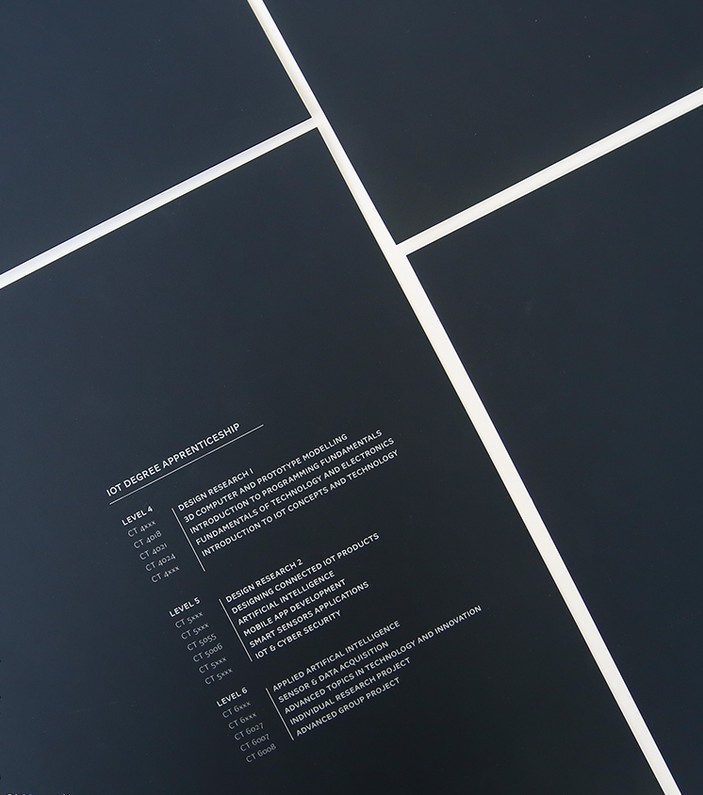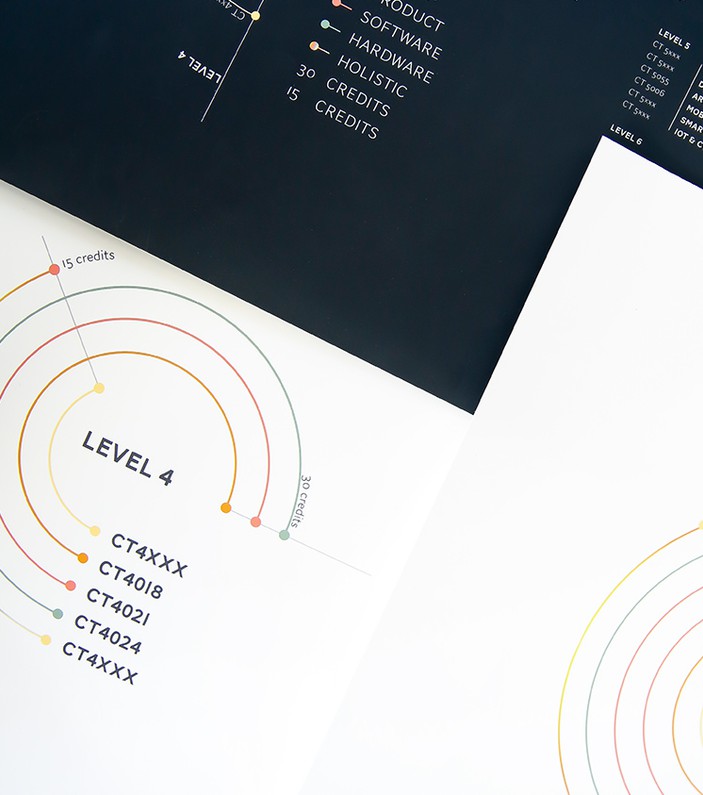Client
University of Gloucestershire
Year
2017
Brief
Devise a Degree Apprenticeship Programme in IoT
Solution
An integrated curriculum that equips apprentices with skills across technology, design and the humanities, to help them gain a unique perspective on designing for a better future.
Keywords
IoT, UX, UI, Product Design, Computing, Connected Cities, Inclusive Design
Download
Curriculum for Degree Apprenticeship in IoT
The University of Gloucestershire invited us to design the curricula for a Degree Apprenticeship in IoT. A Degree Apprenticeship is a new education route, partially funded by the Government, primarily targeted at 18 to 19-year-olds, bringing together the best of higher and vocational training.
In putting this 6 year course together we started off by evaluating what knowledge actually makes a good IoT designer. At a time when the role of design is constantly shifting, becoming more relevant than ever, what are the skills that a designer must have in order to make an impact and create lasting value?
From our research, the university programmes that currently teach IoT tend to focus almost exclusively on specialised topics from the realm of engineering, computing, and technology, ignoring the human side of design which involves indispensable disciplines such as research, sustainability and product design. Our proposal addresses exactly this divide.
For IoT to make a lasting difference, before starting to design and programme, designers need to have a holistic, integrative understanding of people’s nature, their needs and aspirations. With this in mind we started by looking at our own innovation process and divided the module according to the four fundamental strands of knowledge we believe any good designer should have: Human, Product, Software, Hardware. Every semester, the students will explore various areas of these fields, through modules such as: Design Research, Applied Artificial Intelligence, Advanced Topics in technology and Innovation to name a few.
After completing this course, the students will be brilliantly prepared to address any design challenge from various perspectives and angles and develop their own approach to human-centered design.
We will soon find out if this module will come to life. Meanwhile, if you have any IoT projects you’d like to pursue and you think we might be able to help, do get in touch.
In putting this 6 year course together we started off by evaluating what knowledge actually makes a good IoT designer. At a time when the role of design is constantly shifting, becoming more relevant than ever, what are the skills that a designer must have in order to make an impact and create lasting value?
From our research, the university programmes that currently teach IoT tend to focus almost exclusively on specialised topics from the realm of engineering, computing, and technology, ignoring the human side of design which involves indispensable disciplines such as research, sustainability and product design. Our proposal addresses exactly this divide.
For IoT to make a lasting difference, before starting to design and programme, designers need to have a holistic, integrative understanding of people’s nature, their needs and aspirations. With this in mind we started by looking at our own innovation process and divided the module according to the four fundamental strands of knowledge we believe any good designer should have: Human, Product, Software, Hardware. Every semester, the students will explore various areas of these fields, through modules such as: Design Research, Applied Artificial Intelligence, Advanced Topics in technology and Innovation to name a few.
After completing this course, the students will be brilliantly prepared to address any design challenge from various perspectives and angles and develop their own approach to human-centered design.
We will soon find out if this module will come to life. Meanwhile, if you have any IoT projects you’d like to pursue and you think we might be able to help, do get in touch.











